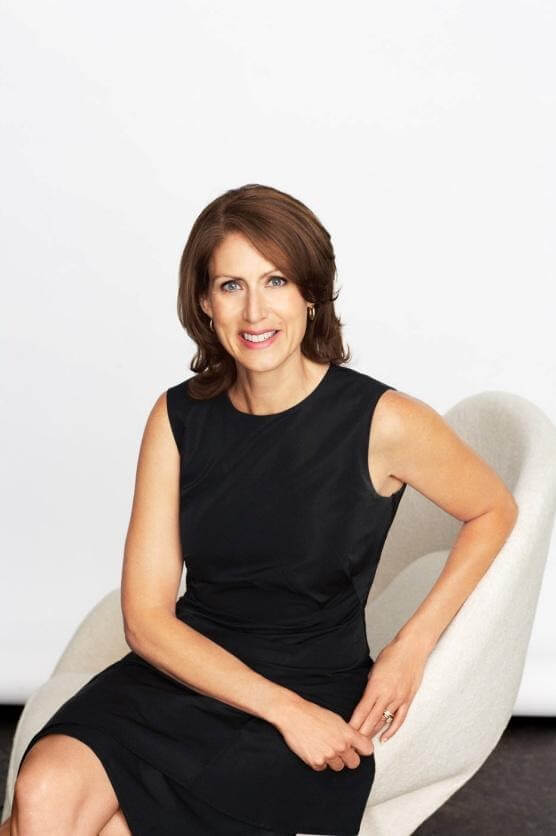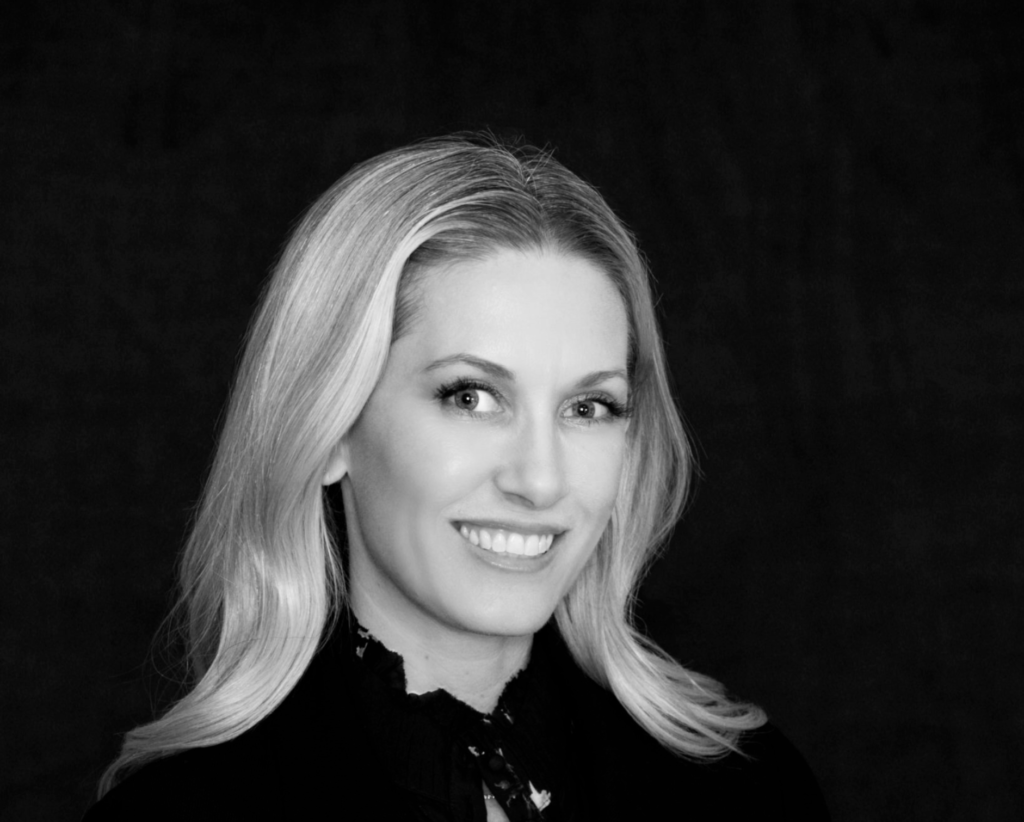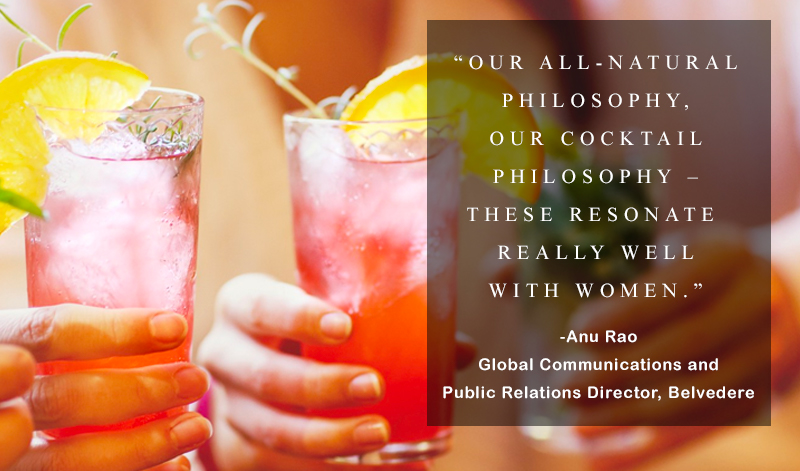

“Our all-natural philosophy, our cocktail philosophy — these resonate really well with women.” — Anu Rao, Global Communications and Public Relations Director, Belvedere
Belvedere is a premium vodka made from Polish rye, and it’s the only vodka in the broad Moët Hennessy portfolio.
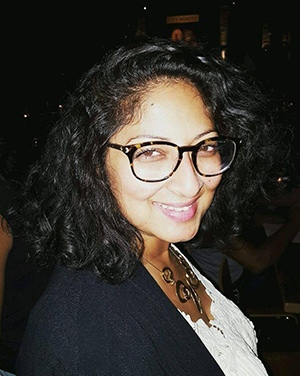
Anu Rao, Belvedere’s global communications and public relations director, recently spoke to SheReports about changing perceptions of spirits and marketing in the #MeToo era.
With so many premium vodkas in the marketplace, how do you differentiate your brand?
The competition is super steep. But there are a few ways we differentiate and that we believe will move us forward in marketing to a new consumer in a new kind of landscape.
First is the notion of taste in vodka. The definition of vodka in the U.S. is that it’s almost colorless, odorless, tasteless; that’s what the consumer pretty much thinks. We combat that with the notion that vodka can actually have taste and character and dimension and complexity. For us, it’s really about our Polish rye, which imparts a lot of flavor.
We combat that with the notion that vodka can actually have taste and character and dimension and complexity.
Then, in terms of the rye, we are regulated by a very strict Polish appellation, which dictates that legally we can’t actually add anything to the product outside of rye and water. So there are no sugars or glycerin or oils, which you can find in some other brands. We can’t do that, and that’s something that resonates really well now, because people really care about what goes into the products they’re consuming.
This actually fits with the general real-foods, ingredients-you-can-pronounce idea.
We have a balanced-living mind-set and a less-is-more philosophy. Even our cocktails and everything we put out there is very much about purity and fewer ingredients — low-sugar cocktails, long drinks that you can sip for a while, things that promote a balanced experience.
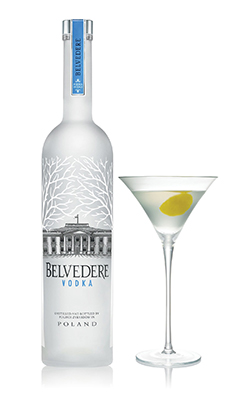
How does that manifest in your marketing?
Right now we have a program that we call Relearn Natural. It’s everything from educating bartenders to doing consumer events to just having general communications around our manifesto about keeping it real, keeping it simple, keeping it local. And the Polska rye that we use — “Polska” is another way of saying “Polish,” but we always say “Polska” — is very authentic to Poland and very local to Poland. We live by this manifesto, and it’s the program that we’ve got out there and that we refresh every year.
What do you see as current trends in spirits marketing?
I think we’re talking about it. Trends in vodka used to be led by flavors. Every brand was coming out with some new sugary confection. We never really did that. We do have what we call macerations, but they’re all-natural. They’re basically fruit that’s been soaked in the spirit.
The trend we see now is that the consumer is just much more conscious of what they’re putting into their bodies. We’re seeing that consumers might be drinking less, but they’re drinking better. They value substance-forward brands, and we believe we’re in line with that value.
Even our cocktails and everything we put out there is very much about purity and fewer ingredients — low-sugar cocktails, long drinks that you can sip for a while, things that promote a balanced experience.
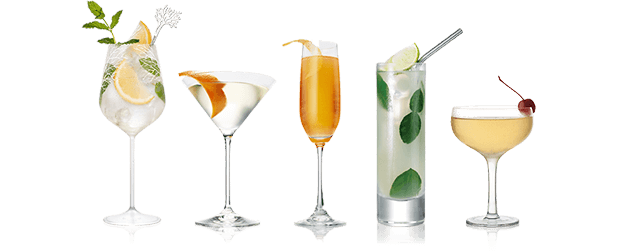
We’re also seeing that ostentatious luxury, the sort of rah-rah club vibe, is shifting to a more intimate experience. People care more about provenance and product production. They want transparency about production. Those are the trends that are really driving our marketing, and they’re things we’ve always done.
You mentioned the rah-rah club vibe. Spirits marketing traditionally has been very male-focused. How much of your consumer base is women?
We market more to a psychographic than to a gender, but our consumer base is 50–50. We look at a consumer who cares about what they’re consuming and wants to shift to a more mature way of being, having more intimate experiences with their friends, more meaningful experiences in general. It’s less of a see-and-be-seen vibe and more of “what am I actually experiencing?” So we’re focused on that. Our all-natural philosophy, our cocktail philosophy — these resonate really well with women.
It’s less of a see-and-be-seen vibe and more of “what am I actually experiencing?” So we’re focused on that.
On a broader scale, do you think gender portrayals in spirits marketing are changing?
We’re definitely seeing a shift for very sexualized marketing to marketing that is more authentic to a brand and is more genuine to the actual product — and a lifestyle that’s more inclusive of all kinds of people and genders.
You’ll be speaking this month at a conference on marketing to women in the #MeToo era. What will you be talking about?
I think the main thing about #MeToo or any kind of movement from a marketing perspective is staying true to your brand. One of the partners we’re working with in 2018 and 2019 is Janelle Monáe. She recently dropped her album, and we launched a [digital] program with her titled A Beautiful Future. The program is about inclusivity for all, finding and telling and revealing the unexpected stories out there across different arts mediums.
We’re definitely seeing a shift for very sexualized marketing to marketing that is more authentic to a brand and is more genuine to the actual product — and a lifestyle that’s more inclusive of all kinds of people and genders.
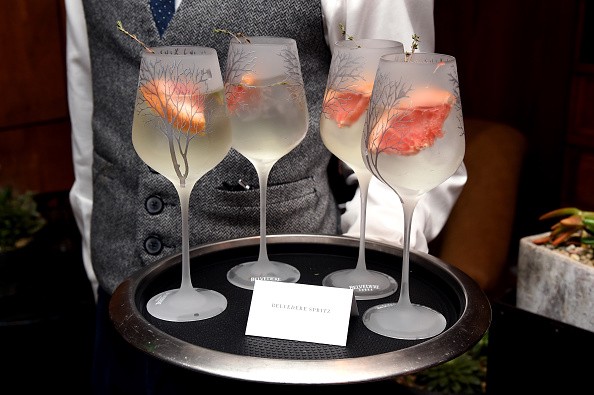
One of the things I’m going to be talking about at the conference is the launch of A Beautiful Future, which was around the Oscars® in March, when we had Janelle and a panel of women talking about their experiences. Janelle is heavily into inclusivity in music and film and Hollywood, as are we. Our ethos has always been about community, about “we, not me,” about moving society forward with positive action and positivity and optimism. We’re going to talk about how we can be forward-thinking and take the learnings and really move the industry forward.
More From the Summer Issue of SheReports:
- Celebrating More
- Bringing People Together in Real Life, Online
- Empowering Las Vegas Tourism Campaign Promotes Inclusivity
- Pink to Make a Point
- Pool-Party Power Suit
- #SheDidThat: Priscilla Presley


